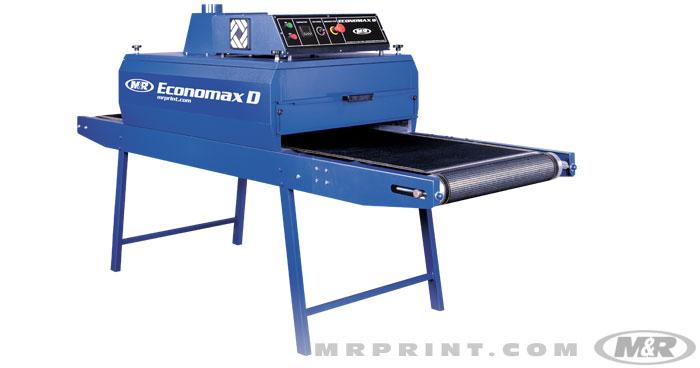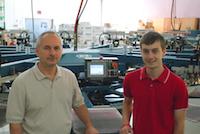The best screen printing equipment is easy to use, machined to precise tolerances, easy to integrate with other equipment—and durable.
The Press: The most important item is the press. You shouldn't settle for less than a four station, four-color manual screen printing press with micro-registration. More colors mean more business. More stations make room for flash curing and make it possible for one person to load and unload T-shirts while another screen prints. And presses that allow you to add color capacity mean you can spend less now and upgrade later.
You should look to the future when deciding which manual press to get. With automatic presses becoming increasingly affordable, more and more manual operations are going automatic. If an automatic press might be in your future, you need to think about the role your manual press will play in that environment. Ideally, you'll be able to use it as sampling press as well as a short-run production press. Using your manual press as a sampling press allows your automatic to spend more time in high-speed production. If you purchase a manual press that's designed to accept automatic-press-sized screen frames and a compatible pre-registration system, you'll be set. If you don't, the frames that work on your manual press cannot be used on the automatic press, making it much less efficient as a sample press. This may require you to invest thousands of dollars in screen frames twice, rather than just once.
Pre-registration Systems: Although they are optional, most screen printers who have pre-registration systems wouldn't print any other way. That's because the systems maintain registration as the images move from artwork to screens to the press. And they have a fast return on investment because they require less expertise from screen printers, reduce setup time up to 95%, and help ensure high-quality prints.
Screen Exposure Systems: Buy the best screen exposure system your budget will allow. To get exposures with fine detail, get an instant-start metal halide unit sized to work with pre-registration systems. If your budget is tight, start with a less expensive fluorescent unit. But perhaps the best solution for the beginning screen printer is an LED screen exposure unit. LED units are user-friendly and fast. Their low power consumption and long life are an added bonus.
Flash Cures: A small infrared flash cure unit is a good choice. If you can afford it, consider one with a head that pivots away from the pallet after a user-set time or when the operator depresses a foot pedal.
Dryers: Infrared electric conveyor dryers are generally smaller and less expensive to purchase, but more expensive to run. Gas dryers tend to be larger and more expensive to buy, but more powerful and less expensive to operate. Which one is right for you? If you plan to grow quickly or eventually buy an automatic screen printing press, gas is probably the better choice.
Although this just begins to tell you what a successful screen printer needs to know, there are many resources on the Web, including www.sgia.org and www.screenweb.com.




